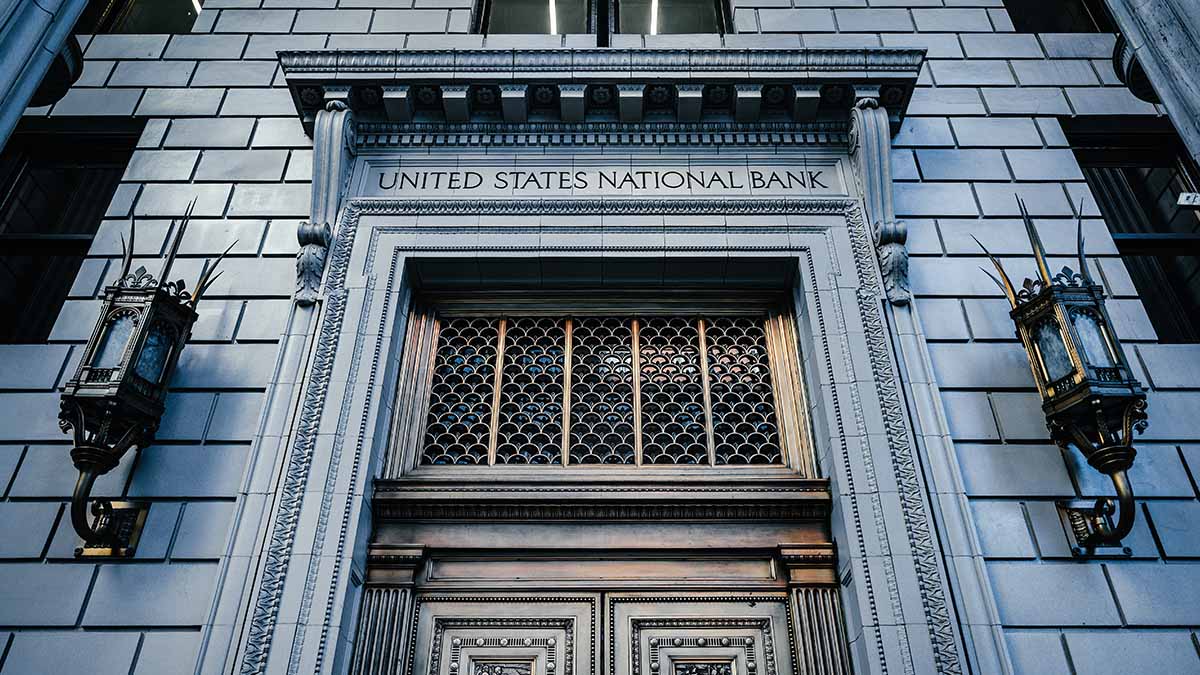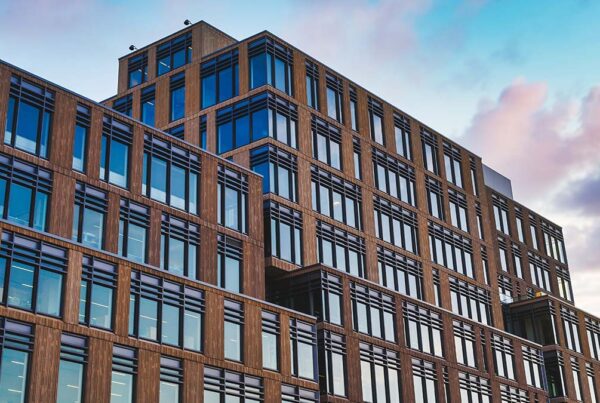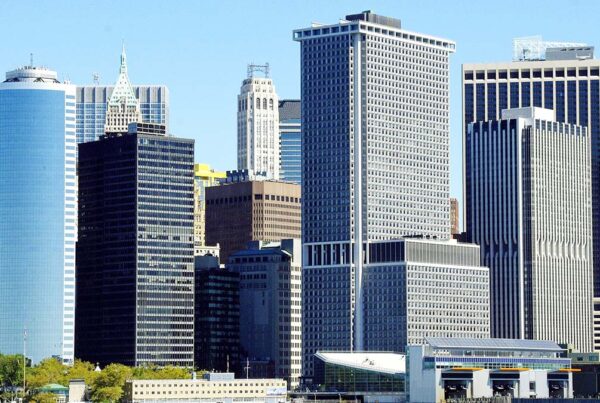
After identifying commercial buildings to purchase, one important decision you’ll face is how much to put down as a down payment on commercial loans.
This is an important decision because the down payment can significantly impact your overall financial position in the property and the success of your investment.
But what’s the correct answer?
While it’s natural to want to put down as little as possible upfront, it’s essential to consider your options and make an informed decision carefully. A higher amount may be beneficial in some instances, which begs the question, “How Much Down For Commercial Real Estate?”
In this article, we explore the elements you should consider when deciding on a down payment for commercial real estate, including your financial resources, the type of property you’re purchasing, and the terms of your loan. By carefully considering these elements, you can make a well-informed decision that sets you up for success as a commercial real estate investor. Let’s begin.
Table of Contents
How much of a down payment do you need for commercial real estate?
For a commercial real estate loan, many commercial lenders typically ask for a down payment of at least 20% to 30% of the property value with 25% being a very common amount. That said, it’s possible to purchase commercial property with no down payment (or no money out of your pocket) if you’re able to use creative financing.
The amount of the down payment needed for a commercial real estate loan—if you choose a bank or credit union to finance your purchase traditionally—is typically a result of the loan-to-value (LTV) ratio and the lender’s underwriting standards.
There are multiple elements that can impact how much is required as a down payment. Some lenders have very strict guidelines they follow no matter what based on their own internal preferences. Other lenders may be willing to take a risk on some properties and investors based on relationships or track record.
The amount of the down payment can also depend on the borrower’s preferences. Some lenders may only require a 20% down payment, but the borrower may insist on a 30% or 40% down payment to reduce their risk and/or increase their monthly cash flow.
What is a good loan-to-value ratio for commercial real estate?
For commercial real estate, a good LTV ratio is 75% or lower. This means the borrower would need to have a down payment of at least 25% of the property value.
The LTV ratio that a lender is willing to accept may depend on various factors, including the borrower’s creditworthiness, the borrower’s track record as a commercial real estate investor, the stability of the property’s income stream, and the overall risk profile of the loan.
The loan-to-value (LTV) ratio measures the size of the loan you seek in relation to the value of the property used as collateral.
As mentioned above, lenders prefer to see a lower LTV ratio because it indicates that the borrower has a more significant stake in the property and is less likely to default on the loan.
What is a good Debt-Service Coverage Ratio for commercial real estate loans?
Another factor that lenders examine when exploring a commercial real estate loan is the Debt-Service Coverage Ratio (DSCR). A DSCR of 1.25 or higher for commercial real estate loans is generally regarded as strong and may allow the borrower to secure more favorable loan terms. However, like the LTV ratio, the actual DSCR that a lender is willing to accept may vary depending on many factors.
Lenders use the DSCR as a quick financial metric to assess the ability of a borrower to make their loan payments based on the property’s income. DSCR is calculated by dividing the property’s net operating income (NOI) by the total amount of debt service (principal and interest payments) required for the loan. A DSCR of 1.0 or higher indicates that the property’s NOI is sufficient to cover the loan payments.
Can I get a commercial mortgage with a 20% down payment?
It depends. Even though a down payment of 25% to 30% is preferred by many commercial lenders, securing a commercial loan with a 20% down payment is certainly within the realm of possibility.
The down payment requirements vary drastically from lender to lender, so always talk with different lenders to explore your options and determine which one offers the best opportunities and terms for your deal.
Does the down payment of a commercial real estate loan change depending on the type of loan?
There are various types of commercial loans, and the down payment amount for the loan may change depending on the loan type. Here are a few examples of commercial real estate loans and typical down payment associated with each:
- Conventional Commercial Loans: These standard loans typically require a down payment of 20% to 30%, depending on the lender and the borrower’s creditworthiness. Local credit unions may be willing to provide better terms than larger institutions, so always ask around and explore different types of commercial property loans.
- SBA Loan: The Small Business Administration (SBA) offers two lending programs that small business owners can utilize to purchase and renovate commercial property. The SBA 7(a) loan program requires as little as a 10% down payment and the SBA 504 loan and requires as little as 20% down.
- Hard Money Loans: These loans are often short-term and are frequently secured by the property’s value rather than the borrower’s creditworthiness. Because of the increased risk, they normally need a larger down payment ranging from 20% to 50%.
- Commercial construction loans are used to finance the development of a new commercial property. The down payment amount varies from lender to lender and project to project, as with other commercial loans. However, because of the inherent risk in new building, down payments for construction loans can be as high as 30% or higher.
- Commercial Bridge Loans: Commercial bridge loans are a short-term financing option that is commonly used by investors to “bridge” the gap between acquiring a new property and refinancing into a longer-term loan with a lower interest rate or renovating the property and selling it. The down payment for a commercial bridge loan varies based on the lender and the loan’s specific parameters. Some lenders may ask a down payment of 30%, while others may just require 10%.
As you’ll notice, the loan program and lender heavily influence the amount you need to put down on a commercial loan. Explore your options and speak with a number of different lenders before deciding on how you want to finance your deal.
Does the down payment of a commercial real estate loan change depending on the type of property?
Generally speaking, the type of commercial property doesn’t change the down payment amount. For example, private lenders typically evaluate a property like an apartment building with the same or similar criteria as office space. This is to say that office buildings, apartment buildings, gas stations, shopping centers, mixed-use buildings, retail centers, and other commercial property types are subject to the lender’s LTV requirements and other financial fundamentals.
However, the down payment required for a commercial real estate loan can vary depending on the property type in the following ways:
- For owner-occupied properties (such as properties acquired through small business loans for use by the business that purchased the property), lenders may require a smaller down payment as low as 10%. In owner-occupied properties where the borrower is planning to use the property as a business location, the lender views the property as a lower risk because the borrower has a more substantial stake in the property’s success than an investment property.
- For investment properties, lenders may require a larger down payment, as much as 30% or more. This is because the borrower is not planning to use the property as a business location and may be seen as having a weaker stake in the property’s success.
- For properties considered to be higher risk, such as those in a declining market or with environmental issues, lenders may require a larger down payment to mitigate their risk.
Does it make sense to put more than 20% down?
20% is a common down payment that meets the down payment requirements of many commercial real estate lenders while offering real estate investors low rates (at the time of acquisition). Because of this, 20% down is a general guideline to follow. However, there can be several benefits to putting more than 20% down on commercial investment property, including:
- Lower interest rates: Borrowers who make larger down payments may be offered lower interest rates by lenders, which can result in significant savings over the life of the loan.
- Lower mortgage payments: By making a larger down payment, you will be borrowing less money and, therefore, will have a lower loan amount and lower monthly mortgage payments. This can be beneficial if you are trying to cash flow the property or have limited funds for ongoing expenses.
- Equity: A larger down payment means you will have more equity in the property from the outset. More equity is helpful in the future if you need to borrow against the equity or if you want to sell the property and realize a higher return on your investment.
- Lender confidence: Lenders may be more willing to lend to borrowers who can make a larger down payment, as it demonstrates that the borrower has a financial stake in the property and may be more motivated to keep up with mortgage payments.
- Lower risk: By putting more money down, you reduce the risk to the lender and yourself. If the property value declines, you will have more equity to fall back on and may be less likely to default on the loan.
Can a balloon payment impact a down payment on an investment property?
Balloon payments can impact the amount of money you need to put down as a down payment on an investment property.
A balloon payment is a payment made at the end of a loan term in which the remainder of the loan is paid in one lump sum. Investors often use balloon payments with loans that have short- and mid-term timelines, such as five to ten years. Investors do this because they expect to get reasonable loan terms for the term of the loan and sell the property or refinance into better financing before the short- or mid-term loan is due.
With a balloon mortgage, the borrower makes smaller monthly payments over the loan term but must pay off the remaining balance in full at the end of the term. This can be a financial burden for borrowers unprepared for the large payment and may impact their ability to pay the required money for a down payment on an investment property. As always, consult with professionals before making any decisions.
Are down payments for commercial real estate loans higher than residential real estate loans?
The down payment requirements for a commercial real estate loan are generally higher than those for a residential mortgage because the risk to the lender is more significant.
The specific down payment requirement for a commercial real estate loan will depend on various factors, including the type of loan obtained, the lender, the borrower’s creditworthiness, and the specific property financed. Some commercial real estate loans may require a down payment of as little as 10%, while others may require a down payment of 30% or more.
Banks commonly view residential real estate loans for owner-occupied properties as less risky than commercial real estate loans and are often willing to accept lower down payments. For example, here are some general guidelines for down payment requirements on an owner-occupied home:
• Conventional mortgage: Conventional loans may require a down payment of as little as 5% for a fixed-rate mortgage.
• FHA loan: These loans, backed by the Federal Housing Administration (FHA), allow borrowers to put down as little as 3.5% of the purchase price.
• VA loan: These loans, backed by the Department of Veterans Affairs (VA), allow qualified veterans and active duty military personnel to buy a home with no down payment in some scenarios.
As you can see, residential, owner-occupied properties can have significantly lower down payments than commercial real estate loans. However, residential loans (also known as home loans) can be more challenging to obtain than commercial loans because the financial institution will work through a more stringent loan application process with higher eligibility requirements. This is because many homeowner loans are backed by Fannie Mae and Freddie Mac, whom the federal government supports because they are government-sponsored enterprises (GSEs) created by Congress to increase the availability of mortgage financing for U.S. citizens. Because of the federal backing, the property owner must pass specific criteria related to their personal credit score, employment history, personal net worth, and other criteria that aren’t evaluated when applying for a commercial loan.
Summary of How Much Down for Commercial Real Estate
When purchasing commercial properties, “How Much Down For Commercial Real Estate?” is a common question, and rightfully so! The down payment is a crucial consideration when exploring financing options because the amount of the down payment can impact the terms of the loan, the interest rate, and the monthly payment—all of which can affect a property’s cash flow.
Higher down payments may lead to lower interest rates and more favorable terms, but it also requires a more significant upfront investment. Lower down payments can make the purchase more accessible in the short term but often come with higher interest rates and higher monthly payments, which can decrease your cash flow.
As a result, there is no one-size-fits-all answer to what percentage you should put down on a commercial property. The answer depends on every commercial real estate deal, your unique circumstances, and the goals of you and your investors. Additionally, as you discuss how much down for commercial real estate with your partners and professional advisors, don’t forget to consider the closing costs you’ll need to pay at approximately the same time.
It is generally recommended to put down at least 25% to 30% of the purchase price to receive typical bank loans. The 25–30% amount can help show lenders that you are a financially responsible borrower, may increase your ability to secure a loan with a lower interest rate, and help keep your monthly payment manageable.



